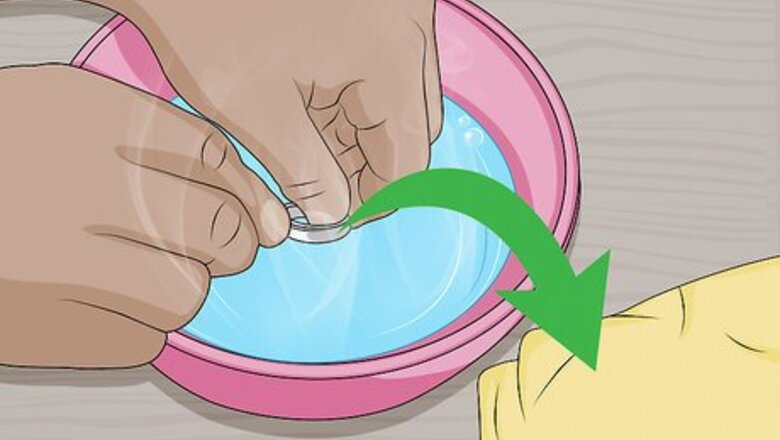
views
Cleaning with Warm Water and Detergent
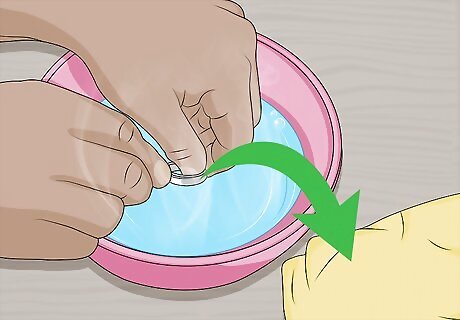
Rinse your pieces of silver with warm water. While rinsing your silver, use your hands to feel and remove dirt and debris. Rinsing your pieces of silver will remove any debris that may scratch it during the cleaning process. Place the pieces on a soft, cotton dish towel.
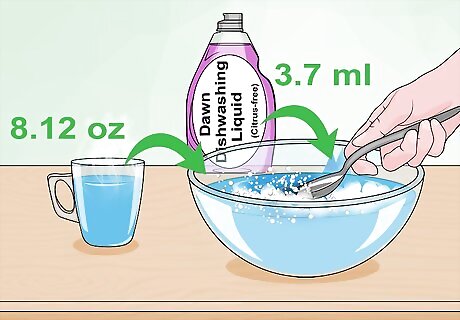
Mix warm water with a mild detergent. Use a mild phosphate-free and ammonia-free dishwashing detergent like Dawn Dishwashing Liquid (make sure it is citrus-free as well). Mix 1/4 tablespoon (3.7 ml) of soap with 1 cup (8.12 oz) of water. Mix until well-combined.
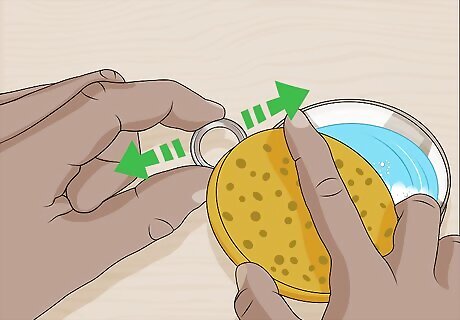
Scrub your silver in a straight, back and forth motion. Scrubbing in a back and forth motion will help you maintain a uniform appearance. Avoid scrubbing in a circular motion. Use a cellulose sponge or a cotton ball/pad dipped in the soapy water to scrub your silver. If your silver contains small crevices, use a toothbrush or a Q-tip to clean these. You can purchase a cellulose sponge from your local hardware store.
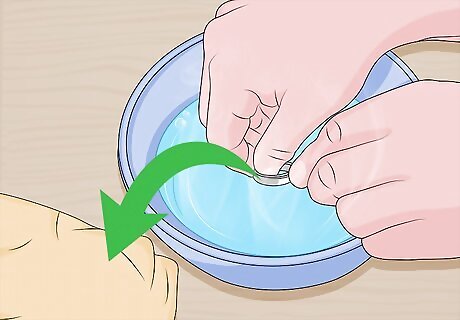
Rinse each piece of silver with warm water. Do not use hot or cold water. Then dry the piece immediately after rinsing it to avoid water stains on your silver.
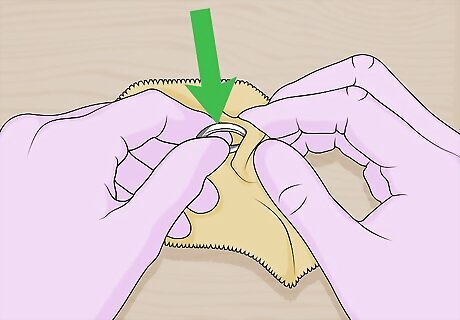
Dry the finished pieces with a soft, cotton cloth. Alternatively, you can use a Selvyt cloth to dry your pieces of silver. Then use a microfiber cloth to polish the finished piece. When handling and cleaning your pieces of silver, you may use nitrile gloves (not latex) to prevent fingerprinting and smudging. This cleaning method works best for pieces of jewelry that contain pearls and opaque or clear gemstones.
Cleaning with Baking Soda Paste
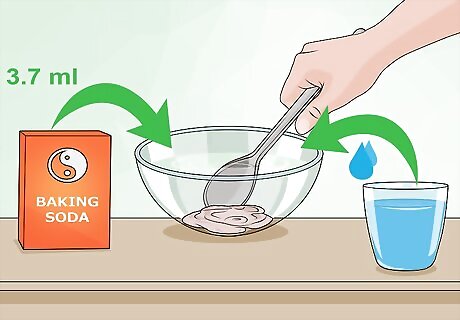
Make a baking soda paste. Mix ¼ tablespoon (3.7 ml) of baking soda with one or two drops of water to form a paste. Make sure the paste is not too watery, as this will decrease the paste's cleaning power. The paste should be relatively dry, but not powdery. Look for a toothpaste-like consistency.
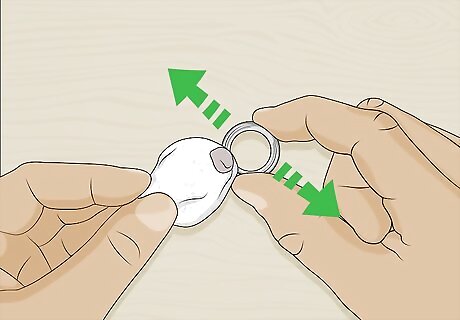
Rub the paste onto your pieces of silver. Use a clean, cotton or microfiber cloth to rub a pea-sized amount of paste onto your pieces of silver. Rub the silver in a straight back and forth motion until you see the shine return. As you clean your silver, it is normal for the baking soda paste to turn grey.
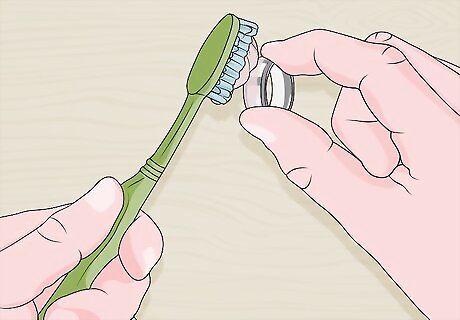
Clean small crevices with a toothbrush. Do this by diluting your paste with a couple more drops of water. Then dip your toothbrush into the diluted paste and scrub the smaller crevices. Alternatively, you can use a Q-tip to clean small crevices if you do not have a spare toothbrush.
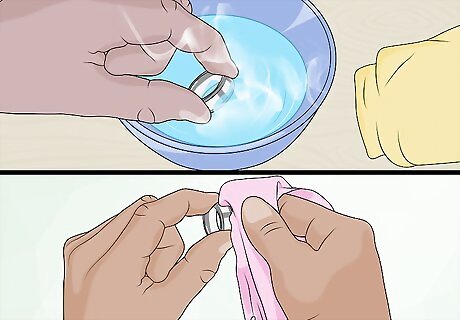
Rinse the silver with warm water. Do this once all the tarnish is removed. Dry the silver with a soft, cotton cloth like a dishtowel or with a Selvyt cloth. Finish by polishing the item with a microfiber cloth.
Cleaning with Aluminum Foil
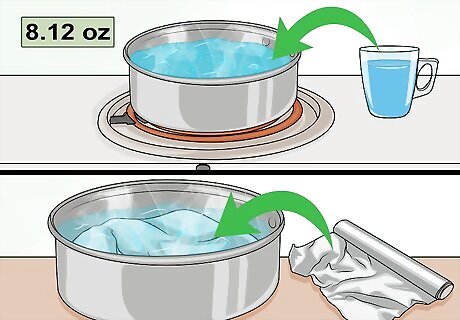
Bring 1 cup (8.12 oz) of water to a boil. While the water is coming to a boil, line a glass or ceramic baking dish with aluminum foil. Make sure the shiny side of the aluminum foil is facing up.
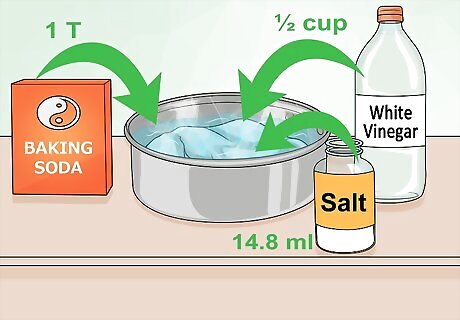
Add 1 tablespoon (14.8 ml) of salt and 1 tablespoon of baking soda to the dish. Then slowly add ½ cup (4.06 oz) of white vinegar. You want to add the vinegar slowly because it will cause the baking soda to fizz. Once all the vinegar is in, mix the ingredients together until well-combined. Make sure the salt is completely dissolved. If not, the granules may scratch your silver.
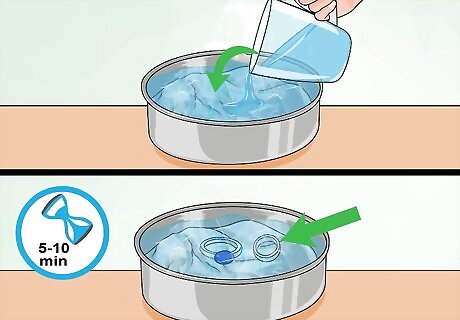
Pour in the boiling water. Then carefully place each piece of silver into the baking dish. Make sure they are lying flat and are not overlapping. Let the silver sit in the baking dish for 5 to 10 minutes. Use salad tongs to rotate and flip the pieces of silver to make sure each side is exposed to the aluminum foil.
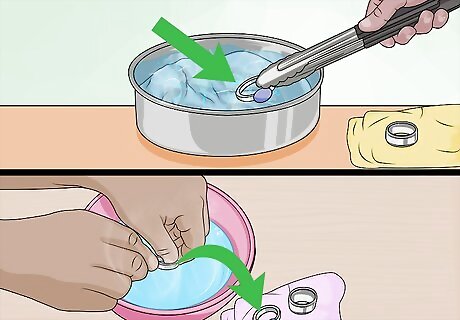
Use the salad tongs to take the pieces of silver out of the bowl. Place each piece on a clean cloth to cool. Then rinse each piece one by one with warm water. Use a soft, cotton cloth to dry the pieces of silver. Make sure to thoroughly dry pieces of silver that contain small crevices and etchings.

Polish your pieces of silver with a microfiber cloth. Do not polish your silver with other types of fabric since these may scratch your silver. Remember that you can use nitrile gloves to avoid smudging while drying and polishing your pieces of silver. EXPERT TIP Marcus Shields Marcus Shields House Cleaning Professional Marcus is the owner of Maid Easy, a local residential cleaning company in Phoenix, Arizona. His cleaning roots date back to his grandmother who cleaned homes for valley residents in the 60’s through the 70’s. After working in tech for over a decade, he came back to the cleaning industry and opened Maid Easy to pass his family’s tried and true methods to home dwellers across the Phoenix Metro Area. Marcus Shields Marcus Shields House Cleaning Professional Our Expert Agrees: When you're polishing silver, use a soft cloth like a microfiber cloth, a mirror cloth, or a makeup pad, and give the piece a good rub


















Comments
0 comment